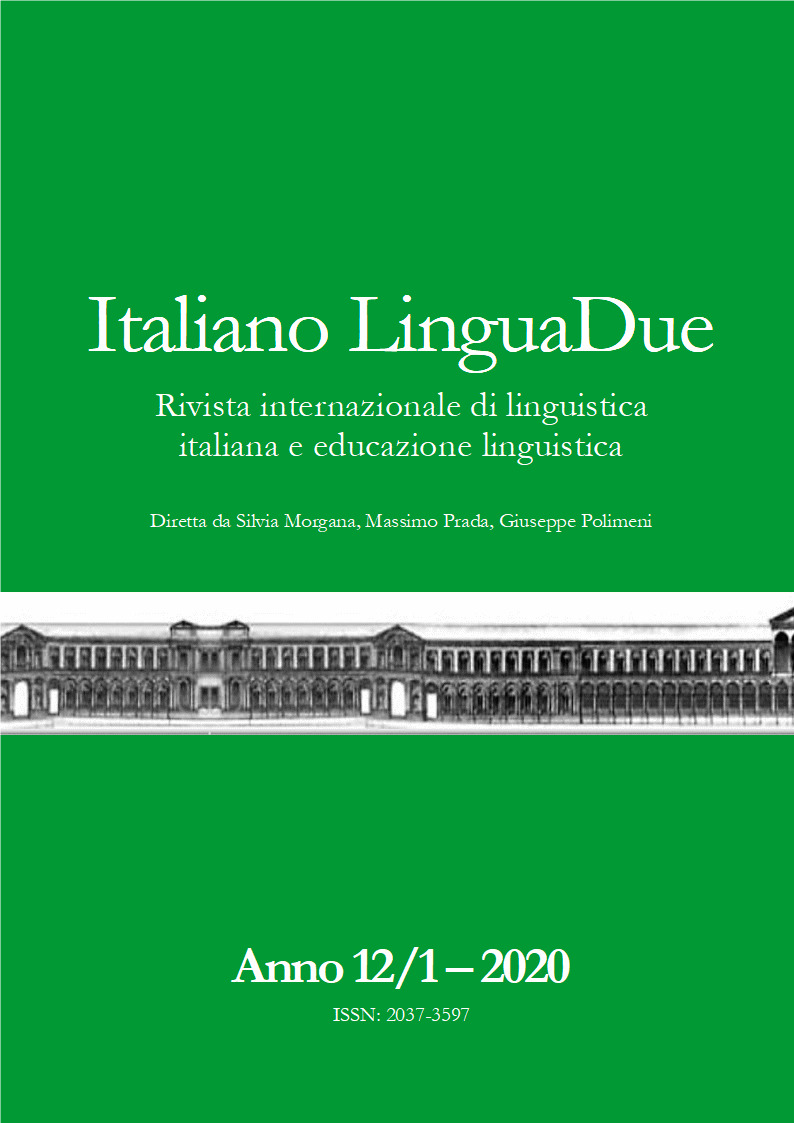LA DIDATTICA DELL’ITALIANO LS: UNO SGUARDO ALLA GERMANIA
DOI:
https://doi.org/10.13130/2037-3597/13749Abstract
C’è un’enorme discrepanza fra i dati positivi diffusi da fonti istituzionali relativamente all’insegnamento dell’italiano nel mondo e la sensazione condivisa da chi si trova ad operare sul campo, che osserva una progressiva perdita di terreno dell’italiano rispetto ad altre lingue straniere. Questo vale anche e soprattutto per la Germania, secondo le statistiche il paese con il maggior numero di studenti di italiano in tutto il mondo. Il calo degli iscritti ai corsi di italiano riguarda non solo l’università, ma anche il mondo della scuola e della formazione permanente. Obiettivo della presente relazione è fornire un quadro della situazione dell’italiano in Germania, individuare probabili sviluppi futuri, elencare criticità e possibili strategie per dare le giuste risposte alle nuove sfide lanciate da uno spettro di esigenze formative che negli ultimi anni è radicalmente cambiato.
Italian fl teaching: a look at Germany
There is a huge discrepancy between the positive data disseminated by institutional sources regarding the teaching of Italian in the world and the feeling of those working in the field who observe a progressive marginalization of Italian compared to other foreign languages. This is also and above all true for Germany, which, according to statistics, is the country with the highest number of students studying Italian in the world. The drop in the number of students enrolled in Italian courses concerns not only universities, but also the world of school and lifelong learning. The aim of this paper is to provide an overview of the situation of Italian in Germany, identify likely future developments, list critical issues and possible strategies to provide the answers to the new challenges launched by a spectrum of training needs that has radically changed in recent years.




